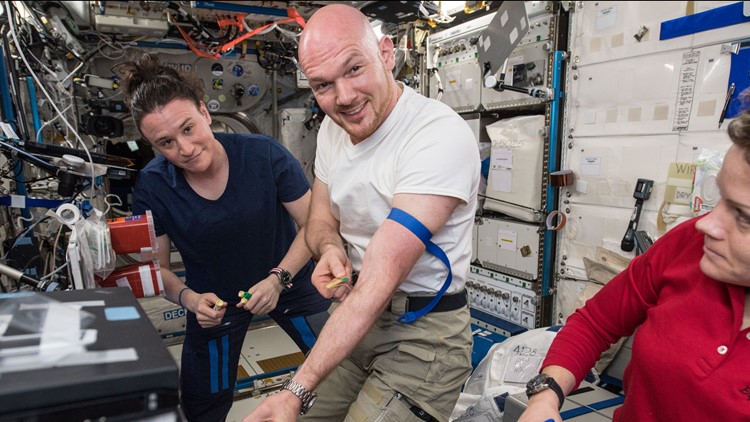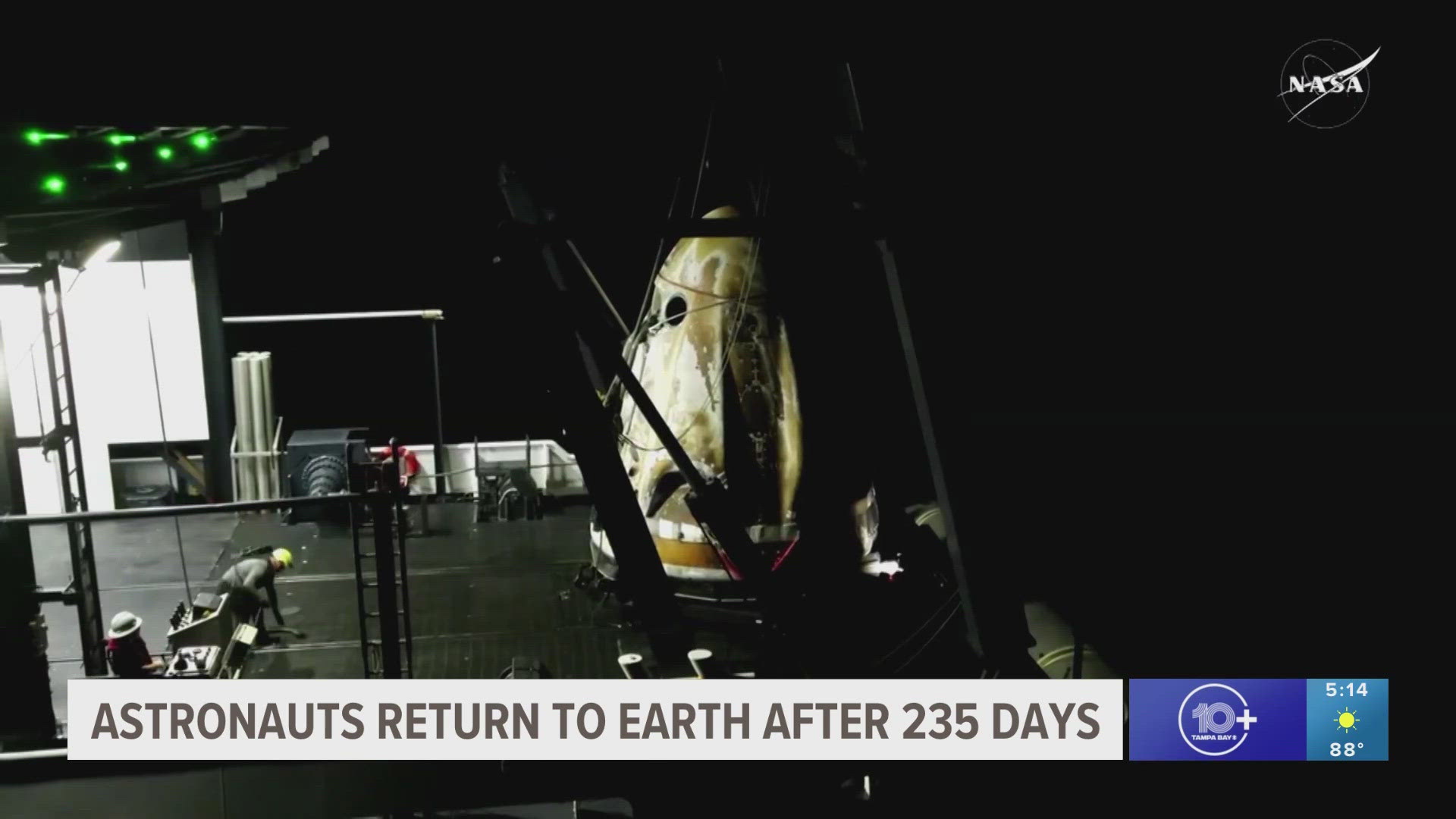When you're sick, you head to your doctor's office, medical center, or emergency room, depending on the severity of your injury.
But what happens when you're around 200 miles from Earth while working on a long-standing mission with NASA? It's not like you have the option for a house call or the ability to schedule an appointment for that strange cough you've had for a few days.
Instead, you rely on training, your crew, medical supplies and medicines available, manuals and the expertise of your mission's flight surgeon.
That's the physician with specialized training in aerospace medicine that is assigned to each crew heading into space.
Their role is multi-faceted and starts back here on Earth while they oversee the health care and medical training for crew members preparing to launch. They'll also take care of any medical issues that arise during, or after spaceflight, according to NASA.
While in space, flight surgeons work at the NASA Mission Control Center and hold weekly private medical conferences with their assigned astronauts. According to the space agency, all the information discussed stays private unless it could affect the mission.
“Given the significant investment in training and preparation for missions, it is critical that flight crewmembers are kept as healthy as possible,” NASA wrote.
To talk to astronauts as they conduct research beyond Earth's atmosphere, NASA also heavily relies on telemedicine, a practice that has become more familiar during the coronavirus pandemic.
The "smart medical systems" allow physicians to not only diagnose ill astronauts while they work in arguably one of the most remote environments, but also provide treatment options.
For example, in 2020 a UNC medical expert was brought in to help an astronaut aboard the International Space Station that had a blood clot.
According to UNC Health, the astronaut was two months into a six-month mission when Dr. Stephan Moll got the call to help establish a method of treatment for the first blood clot case discovered in space.
“Knowing there are no emergency rooms in space, we had to weigh our options very carefully," Moll said of the experience.
It turns out the astronaut was asymptomatic and the only reason the clot was found was due to a research study being conducted on the orbiting laboratory that required the use of ultrasounds, UNC Health reports.
Space.com spoke to Jonathan Clark, a former crew surgeon for NASA's Space Shuttle program, who said while in low-Earth orbit astronauts have also experienced things like upper respiratory infections, colds, skin infections and urinary tract infections.
So, the question remains: What is there to do, if anything, to prevent sickness and medical emergencies in space?
The short answer: It's something NASA is constantly studying and preparing for.
Crews heading for launch will go through regular physicals and are required to quarantine for two weeks before liftoff to help with “flight crew health stabilization” and protect the astronauts already aboard the space station.
Once in space, astronauts are subjected to several health-related quarantines, urine samples and blood and saliva testing. According to NASA, these tests allow them to monitor each astronaut's health and activity level.
Based on the information received modifications can be made to an astronaut's diet and workout routines to help stay healthy.
And if that wasn't enough, NASA also says it develops and runs thousands of "what-if" scenarios when it comes to space.
“The human body is a complex system,” said Jerry Myers, Ph.D., project scientist for computational modeling at NASA’s Glenn Research Center in Ohio. “These models help us determine the probability that astronauts will experience illness or injury on a mission of known distance and duration"
RELATED: NASA, SpaceX sign safety agreement that relies on Starlink satellite technology to avoid collisions
What other people are reading right now:
- Florida Senate sets aside $3 million for Piney Point clean-up
- Tiger Woods was driving 40 mph over speed limit before crash, LA Sheriff says
- CDC's new cruise guidelines could create conflict with Florida's 'no vaccine passports' order
- Derek Chauvin trial: Prosecutors continue to build case around Chauvin's use of force
- Virginia becomes 12th state to ban 'LGBTQ+ panic' defense; Florida could be next
- Planning a trip? Check out these tips first
►Breaking news and weather alerts: Get the free 10 Tampa Bay app
►Stay In the Know! Sign up now for the Brightside Blend Newsletter



